
Ancient Egyptian Jewelry Worn in Life and Death
For the ancient Egyptians, jewelry was far more than decoration—it was a symbol of power, protection, and eternal life.

Adornment Beyond Beauty
Discover how jewelry in ancient Egypt symbolized status, spirituality, and the journey into the afterlife
The ancient Egyptians didn’t just wear jewelry for decoration—it was deeply woven into their culture, beliefs, and daily lives. Jewelry was a marker of wealth, social standing, and spiritual protection. While the elite were draped in gold and precious gemstones, the everyday Egyptian often wore copper pieces, which were more accessible yet still cherished.
What set the Egyptians apart was their belief that jewelry carried power both in life and in the afterlife. This is why so many dazzling pieces were discovered in tombs—ornaments were just as important for the journey into eternity as they were in earthly existence.
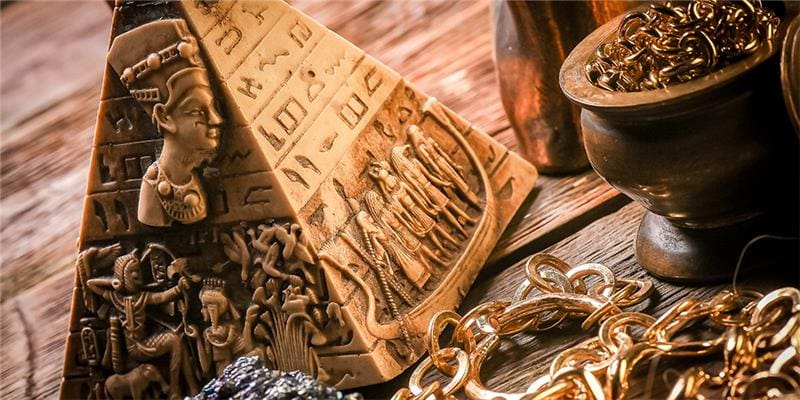
Symbols of Power and Protection
Egyptian jewelry often carried symbolic meaning, with some motifs still recognizable in today’s designs. One of the most famous is the scarab beetle, which represented rebirth and transformation. These beetles, carved into amulets and rings, were more than adornments—they were protective charms thought to help guide the soul safely through the afterlife.

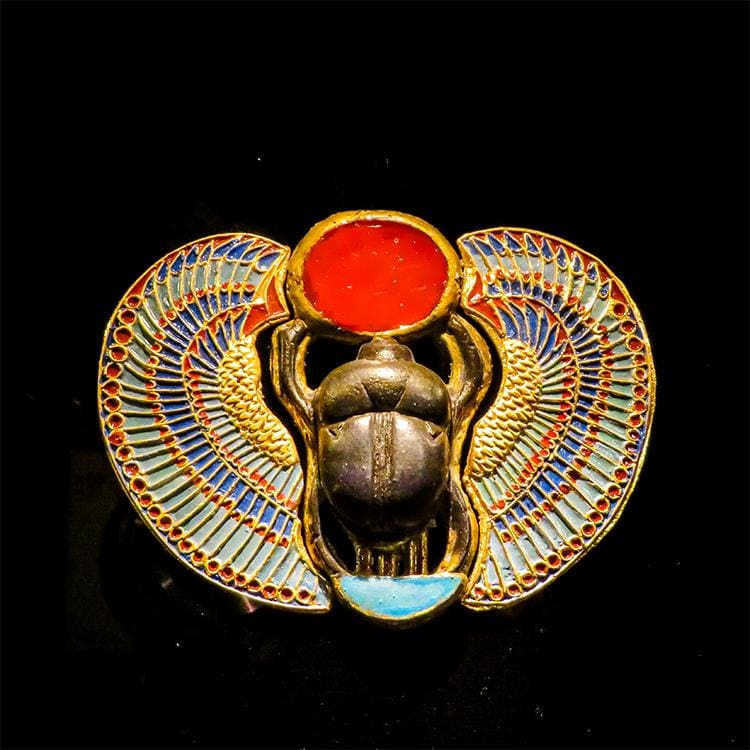
Gemstones such as lapis lazuli, turquoise, amethyst, pearls, and emeralds were highly prized and believed to hold protective or healing properties. They weren’t just chosen for their beauty; they were chosen for their power.
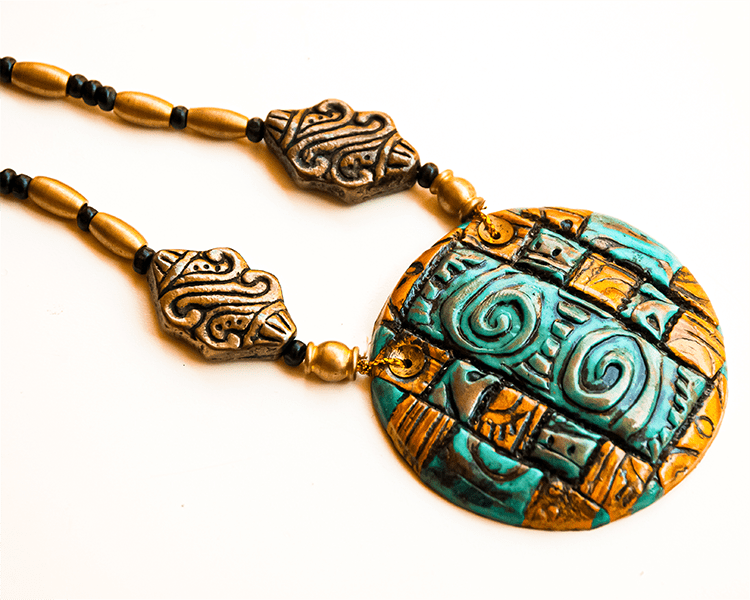
Lapis lazuli, with its deep blue hue, was associated with the heavens and divine wisdom. Turquoise symbolized health and good fortune, while amethyst was thought to ward off negative forces. Pearls were linked to purity and rebirth, and emeralds were said to bring fertility and eternal youth. These stones were often inlaid into gold amulets, necklaces, and rings, creating pieces that were both dazzling and spiritually significant.
Fun Fact: Did you know that Cleopatra was said to have loved emeralds so much that she claimed ownership of every emerald mine in Egypt?
The Craftsmanship That Endures
The artistry of ancient Egyptian jewelers was nothing short of remarkable. Many of their techniques, such as inlaying stones into gold and creating elaborate pendants or cuffs, influenced jewelry design for centuries to come. Even modern statement necklaces and bold cuff bracelets can be traced back to these early styles.
Gold, in particular, was seen as the “flesh of the gods,” eternal and indestructible. It became the perfect material for royal ornaments, connecting rulers to the divine.
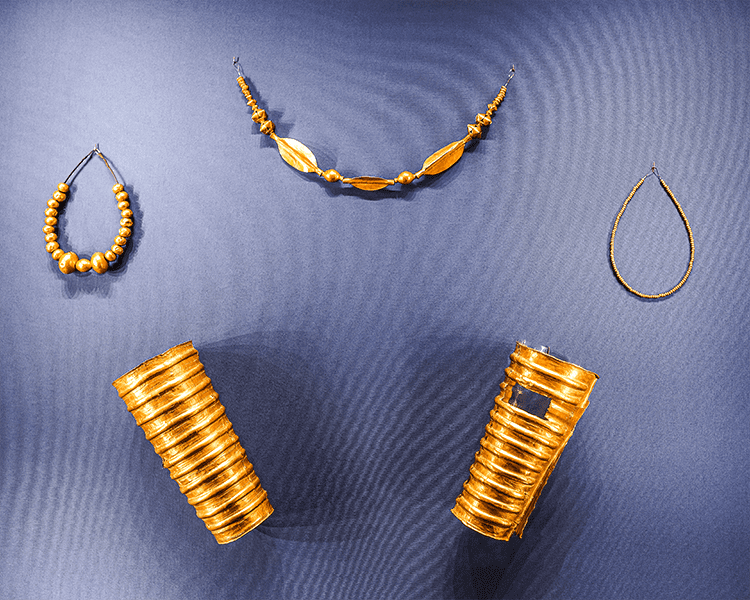
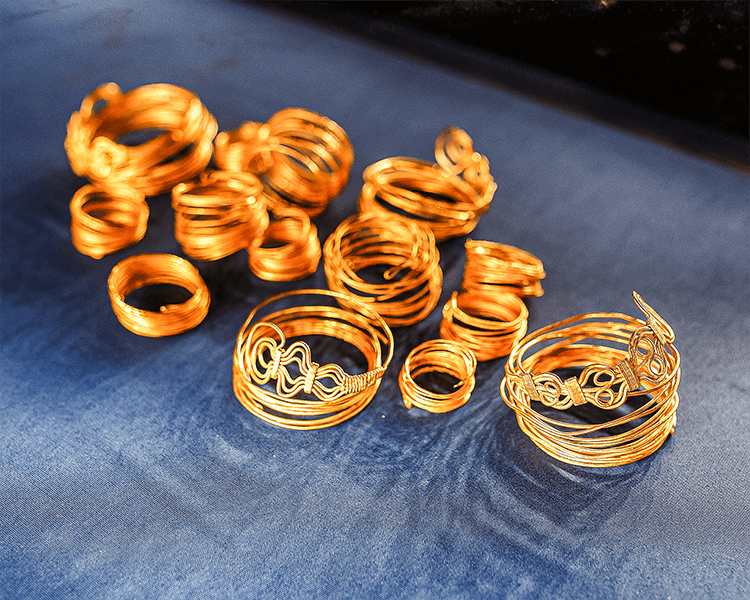
Jewelry in the Afterlife: Treasures of the Tomb
When we think of ancient Egyptian jewelry, it’s impossible not to think of King Tutankhamun. His tomb revealed an extraordinary collection of jewelry, including elaborate pectorals—ornamental chest pieces often inlaid with gold, gemstones, and sacred symbols. Some were even tucked into the wrappings of his mummy, while others filled the chests of the treasury, a testament to the importance of jewelry in preparing for the afterlife.
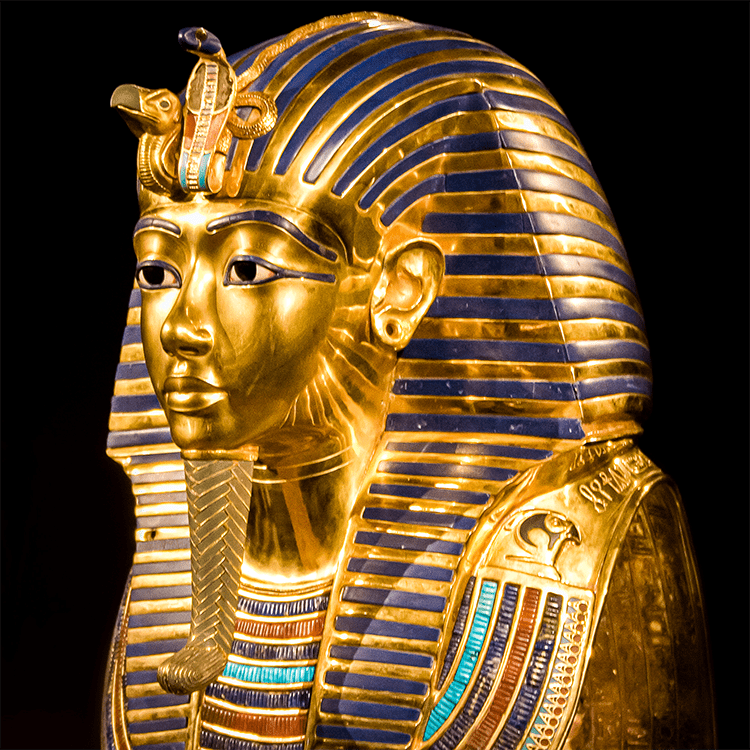
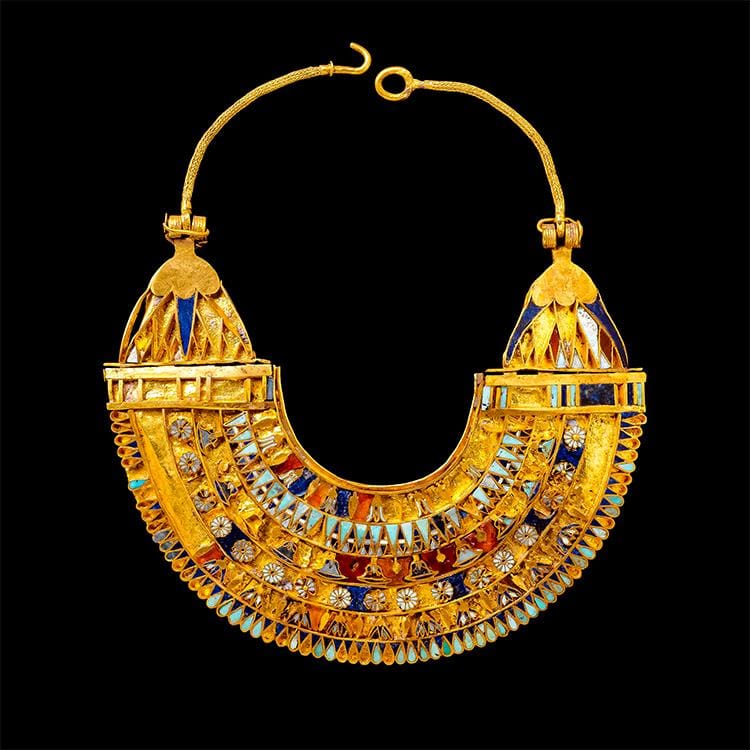
The Lady of the Jewels
In 2014, archaeologists made a discovery that reminded the world just how central jewelry was in ancient Egyptian culture. A lavishly adorned female mummy, found beneath Pharaoh Thutmosis III’s temple in Luxor, was unearthed wearing exquisite jewelry. She was nicknamed the “Lady of the Jewels.”
This find was more than just another treasure—it was living proof of the Egyptian tradition: to wear jewelry in life, and to take it into death.
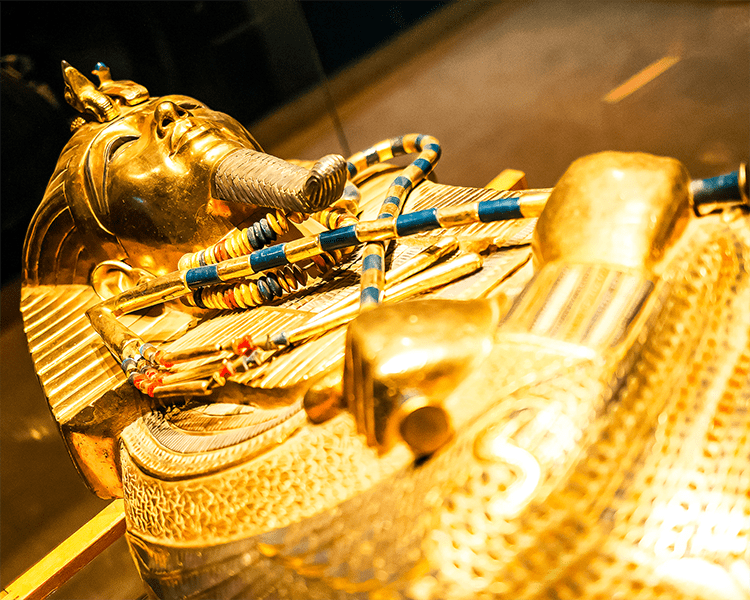
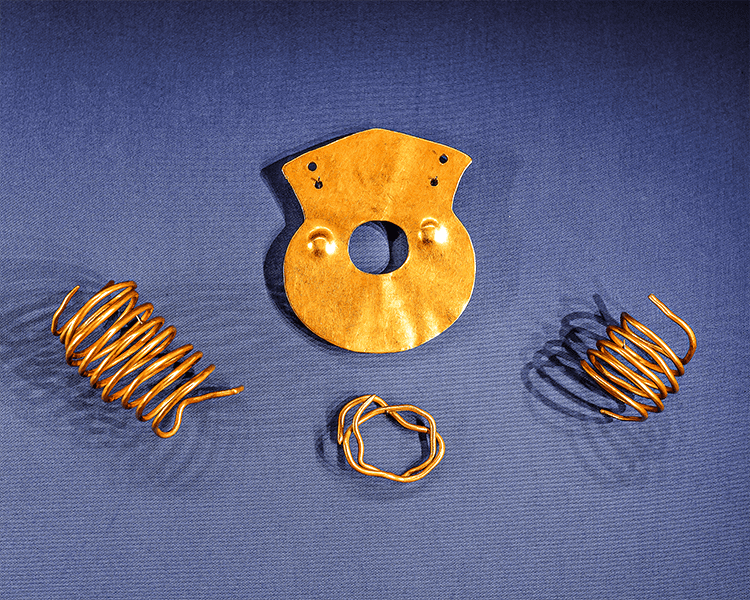
A Lasting Legacy
From protective scarab amulets to breathtaking gold pectorals, ancient Egyptian jewelry continues to inspire today’s designers. Beyond its beauty, it tells us about a civilization that viewed adornment as essential to identity, status, and the eternal soul.
The Egyptians may be gone, but their jewelry—both physically and in spirit—remains timeless.


From Ancient Treasures to Your Jewelry Box
My Jewelry Repair Can Make It Happen
Just as the ancient Egyptians preserved their most cherished adornments for both life and the afterlife, you can protect and restore the jewelry that matters most to you. At My Jewelry Repair, our Master Jewelers specialize in bringing heirlooms, vintage pieces, and modern favorites back to their original brilliance with precision craftsmanship and advanced techniques.
Whether it’s resetting gemstones, repairing a broken setting, or refinishing a piece that has lost its shine, we treat every item with the same care the Egyptians once gave their treasures. Your jewelry carries its own story, and we’re here to keep it shining for generations with our secure, nationwide mail-in service.
Interested in Restoring Your Jewelry & Watches?






I have been following your blog for awhile now… I find you content refreshing. A loyal fan.